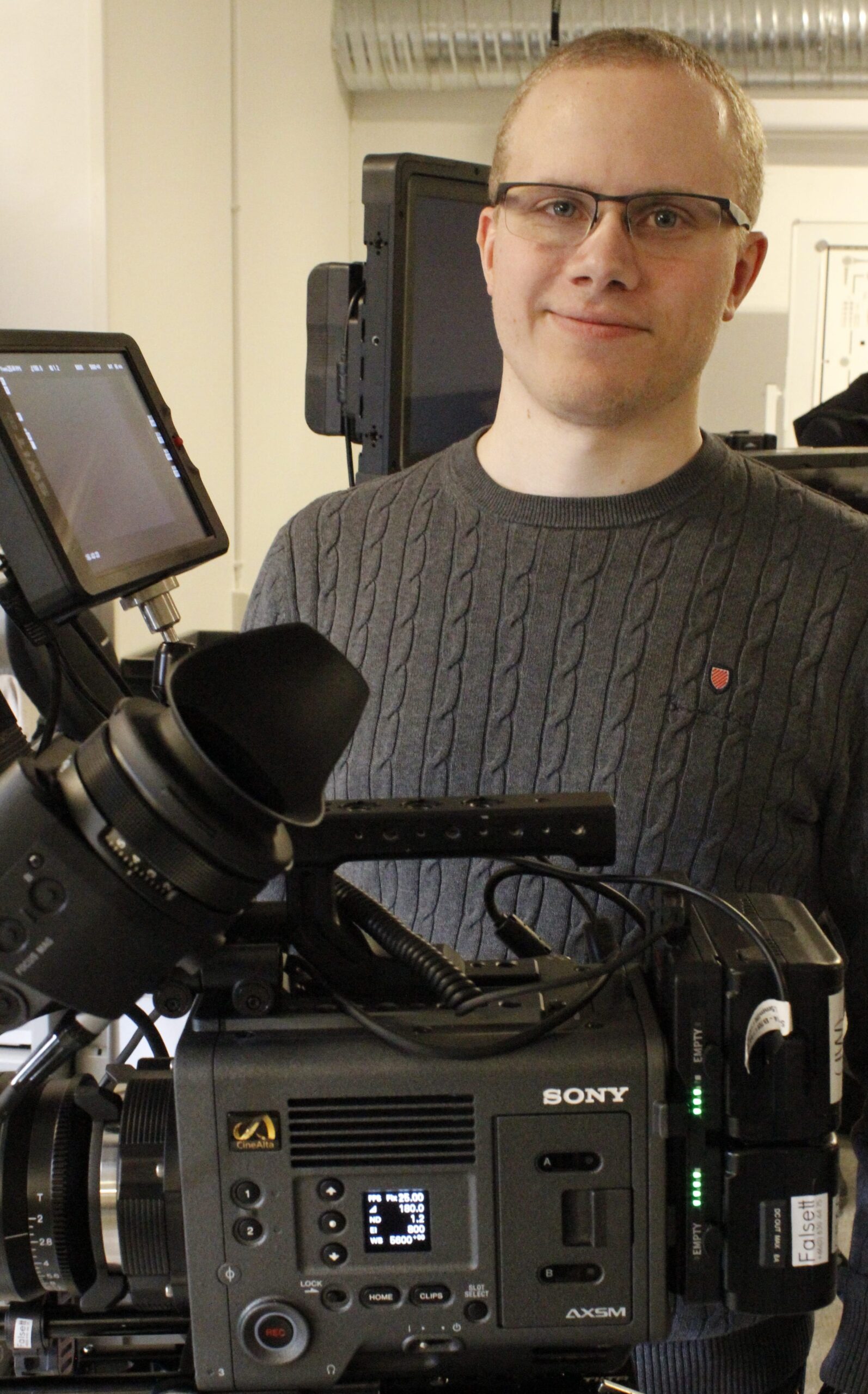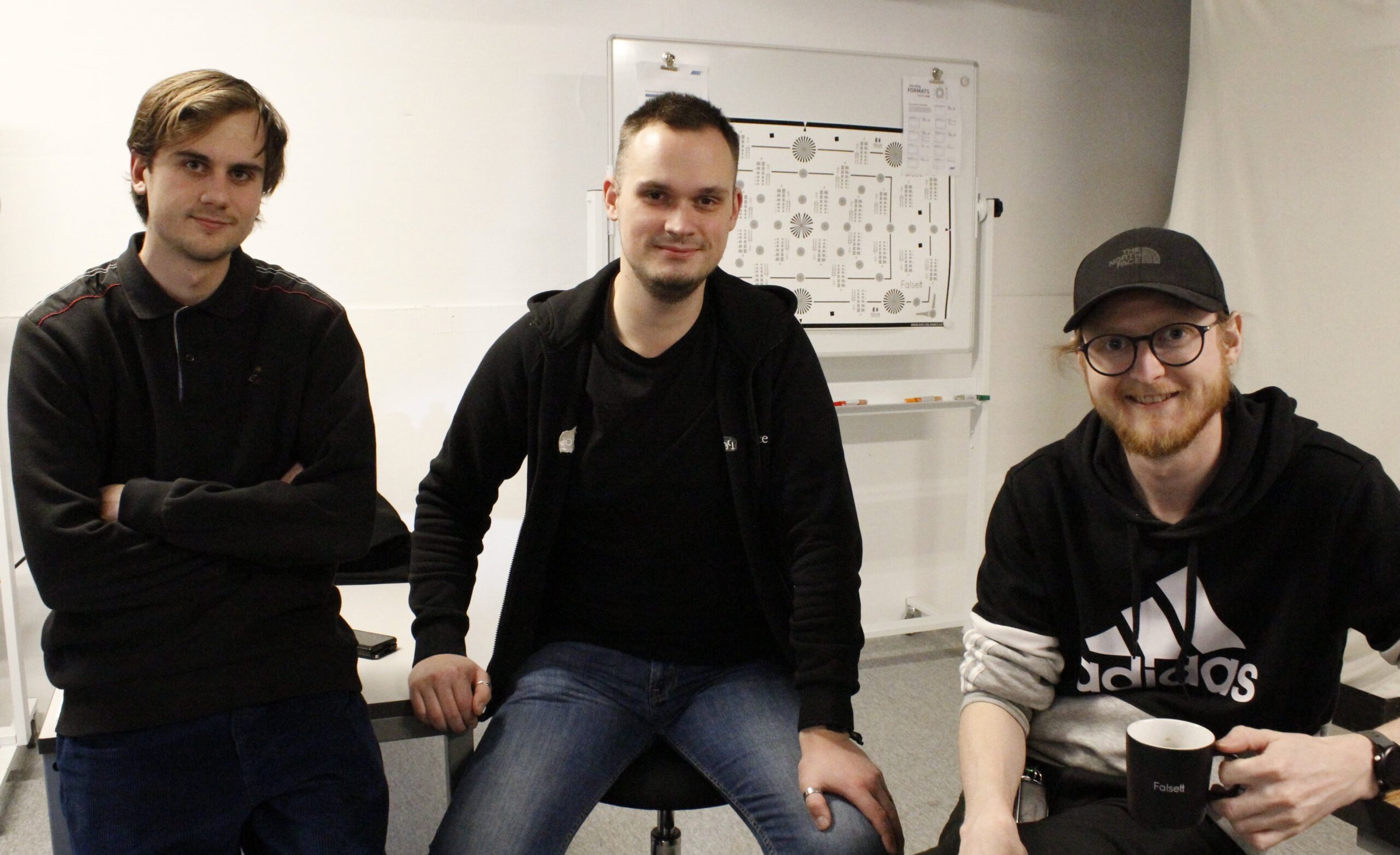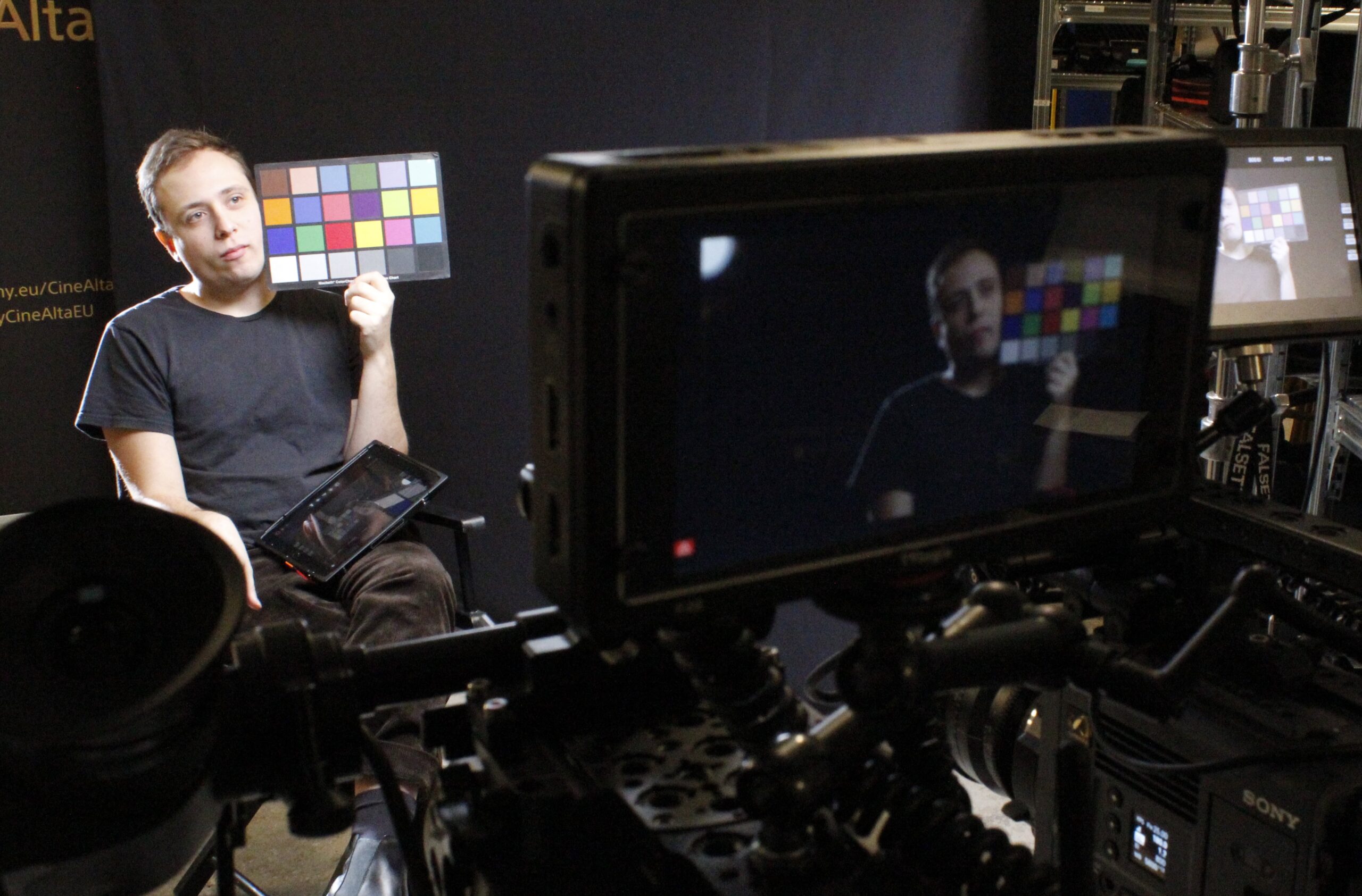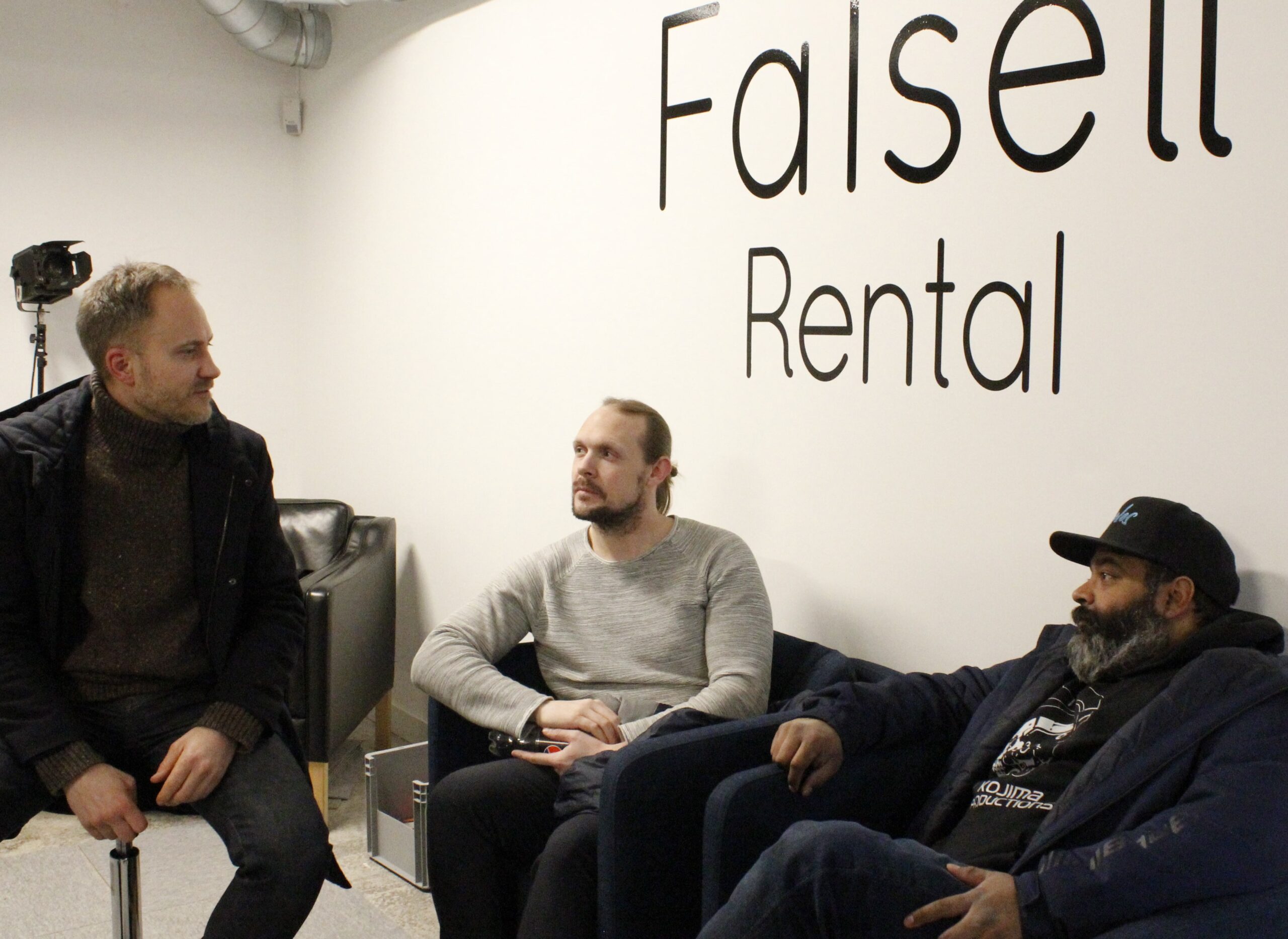Thursday the 13th may not have quite as ominous a ring to it as Friday the 13th, but this Thursday January 13th 2022 turned out to be a lucky date for TURA Scandinavia AB, who held an event showcasing the new Sony VENICE 2 camera at Falsett AB rental house in Stockholm, Sweden.
Cautionary measures had been taken to minimize the risk of coronavirus related health hazards, and in attendance were a small but dedicated group of cinematographers and cinema professionals.
I had a chat with Simon Anderberg who together with three colleagues now runs Falsett AB, a company founded by Vincent Larsson in 2015. Larsson actually began by renting out his Red Weapon camera out of his apartment! But Larsson soon hired Jesper Wahlquist, and the two of them transformed Falsett AB into what it is today.

Emil Larsson from Tura Nord AB with the Venice 2 camera
Larsson remains the owner of Falsett AB, but he has now relocated to Gothenburg and is currently focusing on post production work. Wahlquist has chosen to leave the company in order to continue his career in the movie industry, freelancing as a 1st AC.
Six months ago the company moved to its present spacious quarters, a move necessitated by the fact that the company’s activities were expanding beyond the scope of their locales, they could neither buy more equipment nor handle the equipment they already had at the previous address. The typical customer is a small to medium size commercial shoot with a local crew who appreciate that the company is situated in the city center rather than in a suburb.
In terms of expansion, Falsett AB are now focusing on acquiring more lighting gear, have recently bought a Grip Factory dolly, and have an Alexa super 35 4K camera high up on their wish list.
But the stars of the evening are of course Emil Larson from TURA Scandinavia AB and the new Sony VENICE 2 camera. Since you no longer need the external recorder to record RAW, Sony’s engineers have been able to chop off about 5 cm in length on the camera-kit. The weight is about the same as the original VENICE.

Left to right: Simon Anderberg, Eric Hasso and Trausti Birgisson
”This is the VENICE 2 with a full frame 24 x 36 mm 8.6 K sensor”, Emil proudly announces, continuing ”which is the first sensor in what Sony calls the ”next generation”. The biggest difference between this camera and the original VENICE is that this one can record RAW internally in the camera body, rather than having to use the external recorder. The VENICE 2 records ProRes internally as well. The form factor of this camera body now is more like the Alexa Mini rather than the Amira”.
Emil continues, ”research and development for this camera has been going on now for about one year and the camera is Sony’s response to requests from customers, particularly wishing for a smaller form factor facilitating mounting the camera on a gimbal or in tight quarters. One advantage of the VENICE is of course that you can always take the camera apart and use the ”RIALTO” extension-unit to place the image-sensor 5 metres away, if you need to put the lens in a really small compartment”.

Kenneth Ishii FSF and Emil Larson running side by side tests between Venice 2 and Alexa
Emil feels that the cinematographers in Denmark and Norway have been very quick in embracing the VENICE, whereas in Sweden filmmakers have been slower to adopt it.
”I would say that the VENICE 2 is a complete gamechanger”, Emil muses. ”Since the VENICE cameras use the E-mount, I like to say that they are the most flexible cameras in their class. The E-mount is the full frame mount that has the shortest flange distance, so using adapters you can mount pretty much any lens on this camera. The camera is available for pre-orders now and deliveries will start in about a month, it should be available from rental houses by the end of February”.

Jesper Wahlquist for once in front of the cameras
Rounding off, Emil elaborates a bit on the evolution of Sony’s color science in the last few years.
”Sony implemented a new color science, designed to attract cinematographers rather than video cameramen. This new color science has a natural warmer tone and a more analog feel to it.
Ranging from the A7s3 all the way up to the VENICE, all new Sony cameras now share this new color science, so you can mix footage taken with these various cameras and they will cut together perfectly.
The color science on the older cameras were more geared towards maintaining the REC 709 look, having more of a neutral bluish tone to them, because Sony has always been a broadcast company, so that was what they were aiming for.

Left to right: Simon Olsson FSF, Lars Bredenberg and Andrès Rignell FSF sharing experiences
But, Sony realized with the Fs7 that they had gained some traction with cinematographers on commercials, so they opted to shift their color science towards a more cinematic look.
During the early R&D, they were actually planning to use a Super35-sensor (similar to the FS5 MK II) in the first VENICE, but the idea was dropped when they realized they needed to go full frame rather than staying with a super 35 sensor”.
Lars Pettersson FSF


























